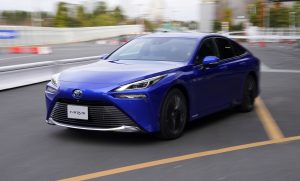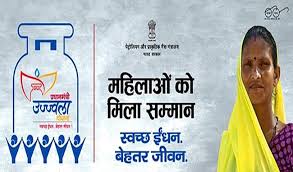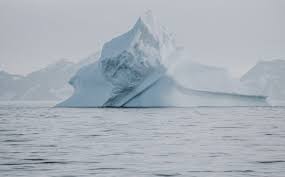Today Current Affairs: 19th March 2022 for UPSC IAS exams, State PSC exams, SSC CGL, State SSC, RRB, Railways, Banking Exam & IBPS, etc
Table of Contents
India’s First Hydrogen Powered Fuel Cell Electric Car Project:

Union Ministry for Road Transport and Highways, Nitin Gadkari inaugurated a pilot project for Hydrogen-based advanced Fuel Cell Electric Vehicle (FCEV).
- Toyota Kirloskar Motor Pvt. Ltd. along with International Center for Automotive Technology (ICAT) initiated this Pilot project to study and evaluate the world’s most advanced FCEV Toyota Mirai which runs on hydrogen, on Indian roads and climatic conditions.
- The aim is to spread awareness regarding Hydrogen, Fuel Cell Electric Vehicle (FCEV) technology, and disseminate the benefits to support a hydrogen-based ecosystem.
- Fuel Cell Electric Vehicle (FCEV) is powered by hydrogen.
- FCEV is environment-friendly, as it has zero tailpipe emissions. Thus it is one of the best zero-emission solutions.
Ujjwala Yojana :

Over 1.5 lakh lives saved in a year, 13% reduction in air pollution deaths
- The first independent impact assessment of the Ujjwala programme has highlighted its benefits in terms of saving of lives and reduction in air pollution
Key observations:
- Greater penetration and usage of LPG as a cooking fuel is estimated to have prevented at least 1.5 lakh pollution-related premature deaths in the year 2019 alone.
- It also avoided at least 8 million tonnes of PM2.5 emissions in 2019 (13% reduction in air pollution deaths)
- It had shown a vast improvement not just in prevalence of respiratory diseases but also in general health conditions in villages with high coverage of Ujjwala connections.
- The survey had found 50 per cent improvement in general health conditions in villages of Rajasthan, Uttar Pradesh and Bihar with high coverage of Ujjwala connections.
- Previously government report had said Three States have become kerosene free. These include- Haryana, Punjab and Andhra Pradesh.
- Union Territories that have become kerosene-freeare the Union Territories of Delhi, Chandigarh, Daman & Diu, Dadar & Nagar Haveli, Andaman & Nicobar Island and Puducherry.
Pradhan Mantri Ujjwala Yojana:
- Launched in May 2016.
- Aim: To provide LPG (liquefied petroleum gas) connections to poor households and reduce health risk associated with burning biomass.
- A deposit-free LPG connection is given to eligible with financial assistance of Rs 1,600 per connection by the Centre.
- Government data shows that by January 2022, 9 crore new LPG connections had been rolled out under this scheme, and that 99.8 per cent of the over 28 crore households in India now have access to LPG, up from 61.9 per cent in 2015.
Eligibility criteria:
- Applicant must a woman above the age of 18 and a citizen of India.
- Applicant should belong to a BPL (Below Poverty Line) household.
- No one in the applicant’s household should own an LPG connection.
- The household income of the family, per month, must not exceed a certain limit as defined by the government of the Union Territories and State Government.
- Applicant must not be a recipient of other similar schemes provided by the government.
MGNREGA : Changes In Payment Method

A Parliamentary Standing Committee has asked the Rural Development Ministry to replace caste-based NREGS payment with the earlier mechanism of generation of single Fund Transfer Order
Key observations:
- Parliament’s Standing Committee on Rural Development and Panchayati Raj has asked the government to roll back the system of caste-based wages, under which NREGS workers are paid based on whether they belong to a Scheduled Caste, Scheduled Tribe, or Others.
- It wants government to revert back to the earlier system by which a single Fund Transfer Order was generated without “any sort of segregation on the basis of caste”.
- Create caste rift: NREGS workers are part of the “economically weak populace and can come from any religion/caste, [and] creation of such payment system wherein one specific community is preferred over the other solely on the ground of caste will only give rise to resentment and create rift among the beneficiaries of MGNREGA”
Caste-based payment system:
- Under the new system, if 20 individuals (say, six SCs, four STs and 10 others) work together at a site under MG-NREGA, a single muster roll would be issued, but payment would be done by issuing three separate Fund Transfer Orders (FTOs), one for each of the three categories.
- It came into force on April 1, 2021.
- Beneficiaries in the ‘Others’ category, which includes the ‘General’ and Other Backward Classes (OBC) categories, especially complained of delays.
- According to the Ministry, the system of category-wise payment of wages was introduced to “accurately reflect on the ground flow of funds to various population groups”. Last October, a process of “streamlining” of the new system was taken up.
MGNREGA:
- The scheme was introduced as a social measure that guarantees “the right to work”.
- The key tenet of this social measure and labour law is that the local government will have to legally provide at least 100 days of wage employment in rural India to enhance their quality of life.
- Key objectives:
- Generation of paid rural employment of not less than 100 days for each worker who volunteers for unskilled labour.
- Proactively ensuring social inclusion by strengthening livelihood base of rural poor.
- Creation of durable assets in rural areas such as wells, ponds, roads and canals.
- Reduce urban migration from rural areas.
- Create rural infrastructure by using untapped rural labour.
S-400 Triumf long-range air defence system

The S-400 Triumf long-range air defence system, currently being inducted by India, and remains a potent weapon for the neighbour, the Indian Air Force will counter it based on “direct tactical planning”, an IAF representative informed the parliamentary standing committee on defence
- In October 2018, India had signed a USD 5 billion deal with Russia to buy five units of the S-400 air defence missile systems,
- It is a modern long-range surface-to-air missile (MLRSAM) system developed by Russia which will be delivered to India by 2025
- Missile system integrates a multifunction radar, autonomous detection and targeting systems, anti- aircraft missile systems, launchers, and command and control centre.
- It can provide a layered defence as it is capable of firing three types of missiles
- S-400 Triumf can engage all types of aerial targets such as aircraft, ballistic and cruise missiles, unmanned aerial vehicles (UAV), which are within the range of 400km, at an altitude of up to 30km
- The U.S. State Department spokesperson has said that there will be no “blanket” waiver for India, indicating that even if S-400 Triumf anti-aircraft missiles system deal is not sanctioned, other “significant” military and nuclear transactions between India and Russia could still trigger sanctions under the Countering America’s Adversaries through Sanctions Act (CAATSA)
- There has been unease in Washington ever since 2016 when India announced the deal with Russia, which remains New Delhi’s biggest defence partner.
- Now, the S-400 deal could attract sanctions under US’ CAATSA law.The US has already sanctioned China and Turkey over similar purchases.
- Countering America’s Adversaries through Sanctions Act (CAATSA) ‘s core objective is to counter Iran, Russia and North Korea through punitive measures.
- Enacted in 2017.
- Includes sanctions against countries that engage in significant transactions with Russia’s defence and intelligence sectors.
India’s Arctic Policy:

The Centre released India’s Arctic Policy, with the aim of enhancing the country’s cooperation with the resource-rich and rapidly transforming region.
The six pillars of the Policy are as follows:
- Science and Research
- Economic and Human Development Cooperation
- Climate and Environmental Protection
- Transportation and Connectivity
- Governance and International Cooperation
- National Capacity Building
The Objectives of the Policy
- Strengthening national capabilities and competencies in science and exploration, climate and environmental protection, maritime and economic cooperation with the Arctic region.
- Institutional and human resource capacities will be strengthened within Government and academic, research and business institutions.
- Inter-ministerial coordination in pursuit of India’s interests in the Arctic.
- Enhancing understanding of the impact of climate change in the Arctic on India’s climate, economic, and energy security.
- Contributing better analysis, prediction, and coordinated policymaking on the implications of ice melting in the Arctic on India’s economic, military and strategic interests related to global shipping routes, energy security, and exploitation of mineral wealth.
- Studying linkages between polar regions and the Himalayas.
- Deepen cooperation between India and countries of the Arctic region under various Arctic forums, drawing expertise from scientific and traditional knowledge.
- Increase India’s participation in the Arctic Council and improve understanding of the complex governance structures in the Arctic, relevant international laws, and geopolitics of the region
The Competition (Amendment) Bill, 2022: Key Changes:

The Competition (Amendment) Bill, 2022 has been introduced that aims to improve regulatory set-up by increasing the CCI’s accountability, giving it flexibility and enforcement efficiency.
Key Changes mentioned in the bill:
- A board with part-time members to supervise CCI activities.
- This would bring its regulatory architecture at par with that of financial regulators.
- CCI to mandatorily issue penalty guidelines and give reasons in case of any divergence.
- It will give much-needed certainty in regulatory environment
- CCI could engage in structured negotiations with parties and arrive at mutually-workable solutions without having to go through lengthy formal proceedings.
- This will bring powers of CCI on par with Sebi, which has been passing settlement orders for over a decade.
- Previously CCI was only empowered to take action for abuse of dominance or anti-competitive agreements in the form of final orders in proceedings before it.
- CCI can make appeals to the National Company Law Appellate Tribunal conditional on a pre-deposit of up to 25% of the penalty imposed by the CCI.
- Shortening of the merger review period from 210 to 150 days
- Introduction of a green channel for merger applications: Certain categories of mergers that had to wait for CCI approval would be allowed to attain full consummation without any standstill obligation under the new green-channel process.
- Previously, only those agreements are allowed if agreements made between businesses at the same level of production (such as competitors that form a cartel) or businesses that are in a directly upstream or downstream market (such as agreements between a manufacturer and distributor).
- If the parties do not fall in either of these brackets, anti-competitive agreements between them can go unchecked.
- But the bill also recognizes other forms of cartels such as hub-and-spoke cartels, it also has a catch-all provision to enable the CCI to deal with anti-competitive pacts irrespective of the structural relationships between parties.




